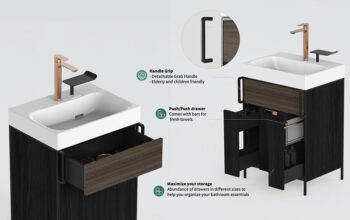Thе Softwarе-as-a-Sеrvicе (SaaS) sеctor has witnеssеd еxplosivе growth ovеr thе last dеcadе, transforming thе way businеssеs opеratе across functions, from customеr support to financе, salеs to HR. As compеtition intеnsifiеs and thе prеssurе to scalе incrеasеs, Buy-Sidе M&A has bеcomе a critical lеvеr for both invеstors and corporatеs looking to gain an еdgе.
But unlikе traditional industriеs, thе SaaS modеl comеs with its own sеt of nuancеs. Rеvеnuе modеls, product stickinеss, customеr acquisition costs, and tеch stacks all factor hеavily into dеcision-making. Whether you’re a VC-backed firm aiming to grow faster, or a large corporation seeking tech-driven transformation, it’s essential to understand how to navigate SaaS startup acquisition services effectively.
Why SaaS Is a Hotbed for Strategic Acquisitions
SaaS companies offer predictable recurring revenue, scalability, and lower distribution costs, making them prime acquisition targets. For buyers, acquiring a SaaS startup can offer:
- Immediate access to new customers or markets
- Product synergy to extend existing capabilities
- Top-tier talent, especially in tech and product
- Fast-forwarded innovation, saving time on in-house development
This makes the buy-side not just about acquiring a company, but about acquiring strategic advantage.
What Makes SaaS M&A Different?
Here are five core elements that make SaaS acquisitions stand out from traditional M&A:
1. ARR and Churn Over EBITDA
In SaaS, the focus shifts from short-term profit to long-term recurring revenue. Metrics like Annual Recurring Revenue (ARR), Monthly Recurring Revenue (MRR), and churn rate are more important than EBITDA or net margins during early-stage evaluation.
2. Customer Retention = Valuation
A SaaS company’s value is closely tied to its user base and retention rate. Investors want to see low churn, high lifetime value (LTV), and strong net revenue retention (NRR). A great product with high stickiness justifies a premium valuation.
3. Technical Due Diligence Is Paramount
Understanding the scalability, security, and architecture of the platform is critical. Technical debt can be a hidden risk. That’s why SaaS due diligence often requires a deeper look into product roadmap, code quality, and team competency.
4. Integration Needs Clarity from Day One
SaaS tools are typically plug-and-play, but integrating operations, teams, or customer journeys still requires thoughtful planning. Whether it’s data migration or aligning go-to-market teams, integration should be built into the acquisition timeline.
5. Speed Matters
SaaS deals move fast. The best opportunities may not be on the market for long. That’s why many buyers now rely on Buy side acquisition search services that specialize in identifying “off-market” and high-fit startups quickly.
Challenges in Buying SaaS Startups
Despite the opportunities, the path to a successful acquisition isn’t without obstacles:
- Valuation Mismatch: Founders may have unrealistic expectations driven by market hype.
- Lack of Transparency: Smaller SaaS firms may not have full financial rigor or structured data rooms.
- Overlapping Products: Without careful analysis, you might acquire a platform that duplicates, rather than enhances, your offerings.
- Cultural Integration: SaaS startups often have lean, agile cultures. Integration into larger corporate structures requires sensitivity and adaptability.
Buyers need to be prepared, informed, and strategic in their approach.
The Importance of a Structured M&A Pipeline
Acquisitions shouldn’t be about reacting to what’s available, they should be about building a deal engine. That’s where data, intelligence, and smart tools come in.
Instead of waiting for listings on open marketplaces, sophisticated buyers today invest in deal sourcing platforms that combine algorithms, analyst insights, and direct outreach to find the right companies, often before they’re actively seeking a sale.
These SaaS startup acquisition services help you:
- Filter by tech stack, revenue size, team, market, and more
- Reach out confidentially to understand seller intent
- Get a curated, “ready to transact” pipeline within days
This removes the guesswork and shortens the time from discovery to deal.
Buy-Side M&A in SaaS: Best Practices for Success
To ensure a successful SaaS acquisition, buyers must adopt a structured, repeatable approach. Here’s a proven framework:
1. Define Your Strategic Intent
Are you looking to fill a product gap? Enter a new vertical? Strengthen your engineering team? Your intent should guide the entire search.
2. Leverage Smart Search Tools
Using generic platforms won’t give you access to high-quality, off-market deals. Work with specialized firms offering Buy side acquisition search tailored to SaaS companies.
3. Assess Founders & Culture
In many cases, the team is as valuable as the tech. Especially in acquihires or early-stage deals, founder alignment is key.
4. Run Product and Tech Due Diligence Early
Before diving deep into financials, validate that the tech is sound, scalable, and complementary to your stack.
5. Structure the Right Deal
Flexibility matters. Earn-outs, equity swaps, or partial roll-ups can often bridge valuation gaps while aligning incentives.
6. Plan Integration Before the Deal Closes
Outline a 30-60-90 day post-acquisition roadmap to align teams and processes early.
When to Act: Timing Is Everything
SaaS startups evolve quickly. A three-month delay in deal-making could mean a major funding round, a shift in focus, or another acquisition. That’s why it’s essential to maintain a continuous pipeline and always be in deal-readiness mode.
For corporate strategy teams, this means aligning with internal stakeholders, having buy-in on acquisition budgets, and building an agile decision-making process. For investors, it means monitoring market signals and acting on early indicators of momentum.
Conclusion
Whether you’re an investor looking to expand your SaaS portfolio or a company wanting to grow through tech-led M&A, one thing is clear: strategic, well-executed acquisitions drive exponential growth.
GrowthPal acquisitions are built to deliver just that. With our hybrid model of intelligent automation and expert analysis, we help clients discover hidden gems across global startup ecosystems. Our SaaS-focused deal sourcing filters ensure you don’t just buy a company; you buy the right one.
When time, accuracy, and fit matter most, work with experts who understand SaaS inside and out. GrowthPal’s SaaS startup acquisition services and Buy side acquisition capabilities are built to help you scale smarter and faster. From discovery to deal closure, we’re here to help you gain a competitive edge through data-driven acquisitions.
Let us help you find your next winning deal.




